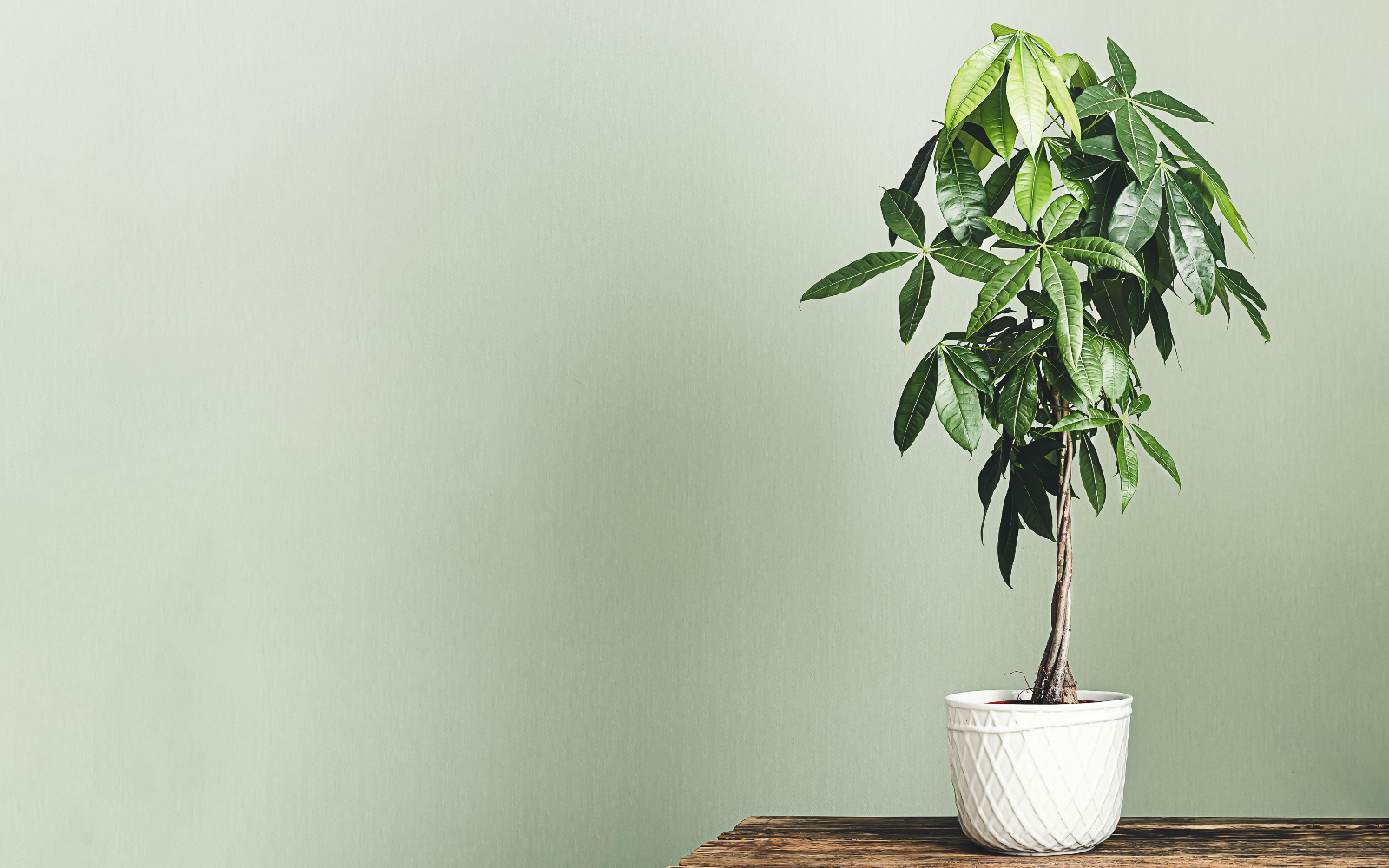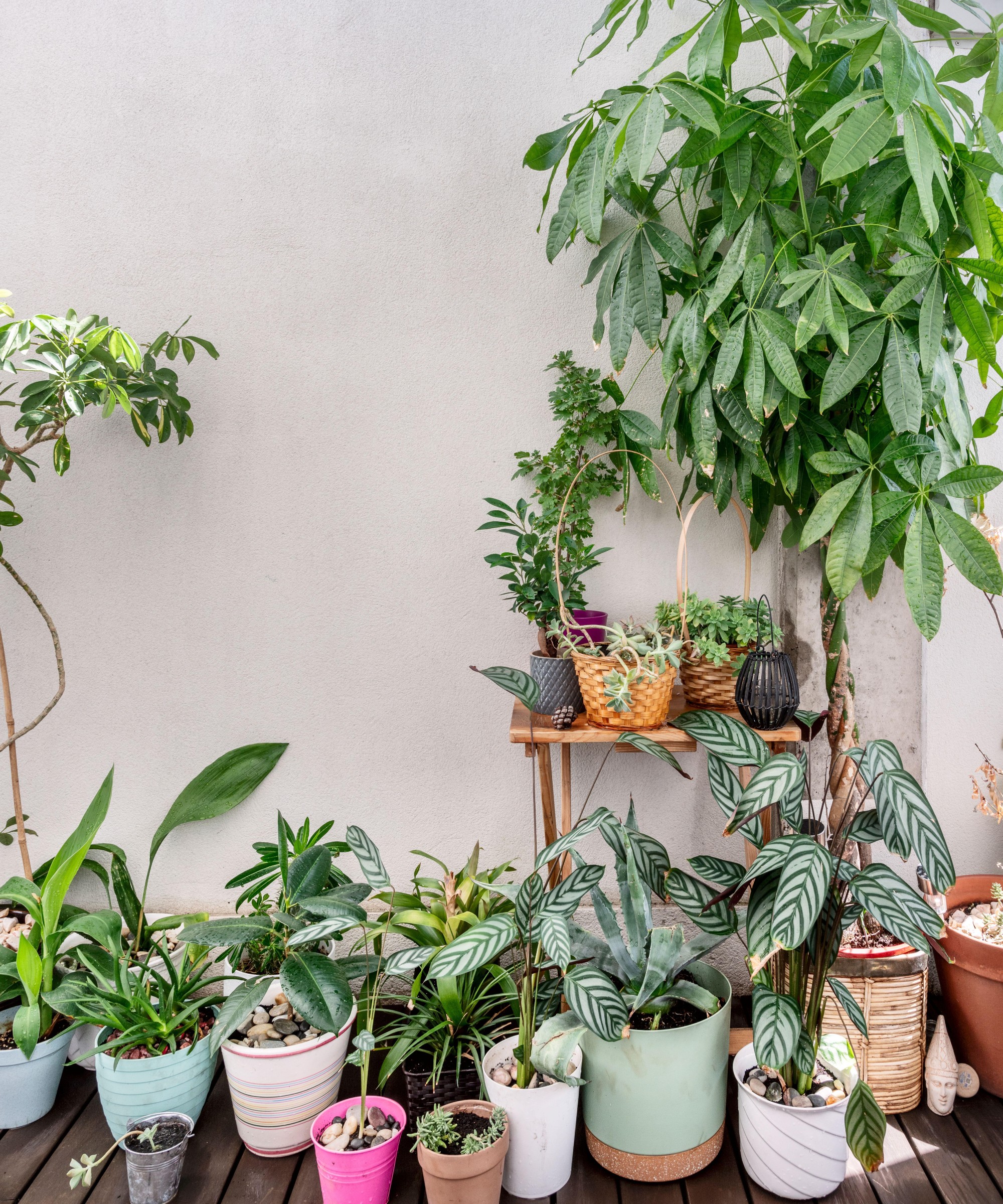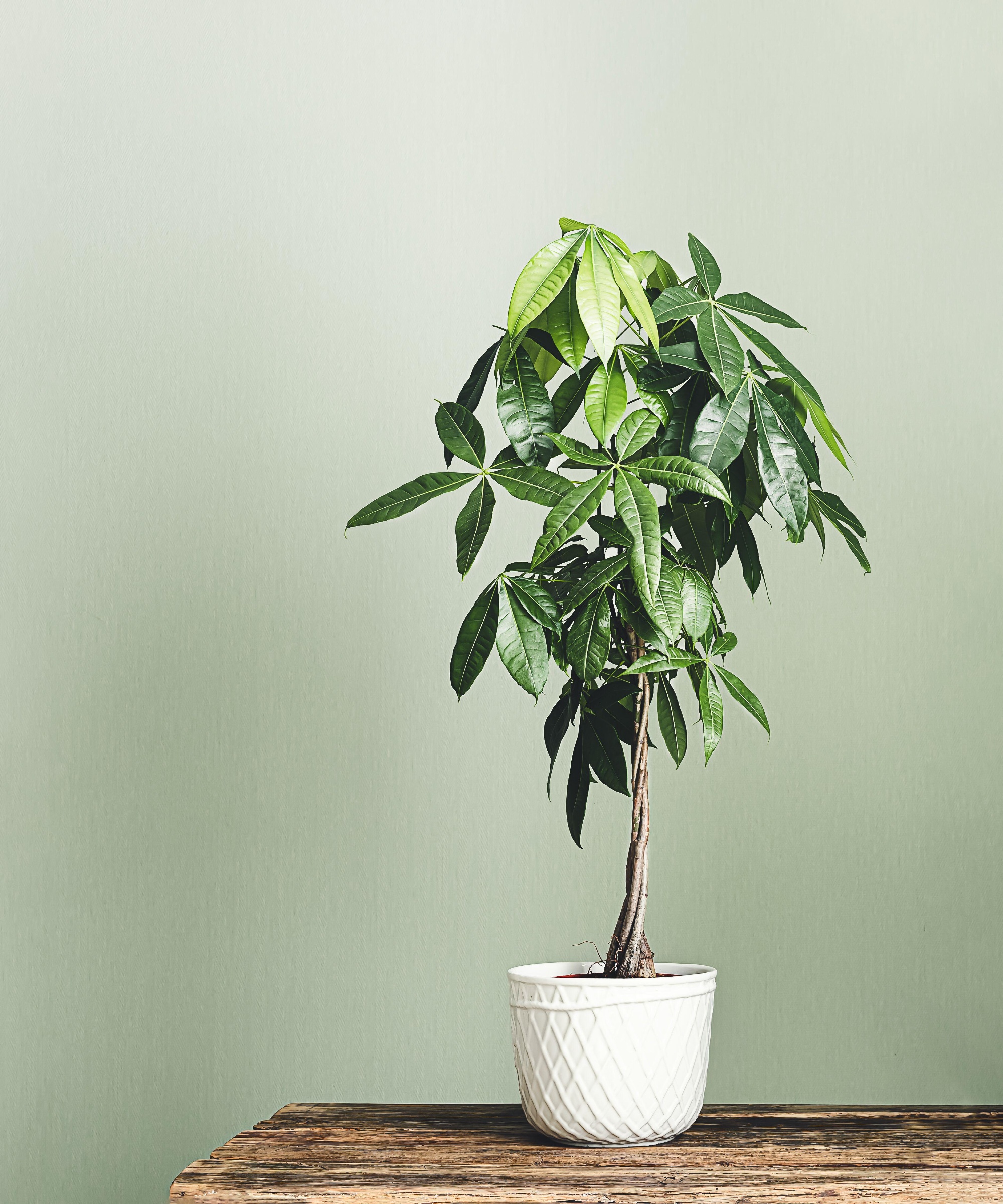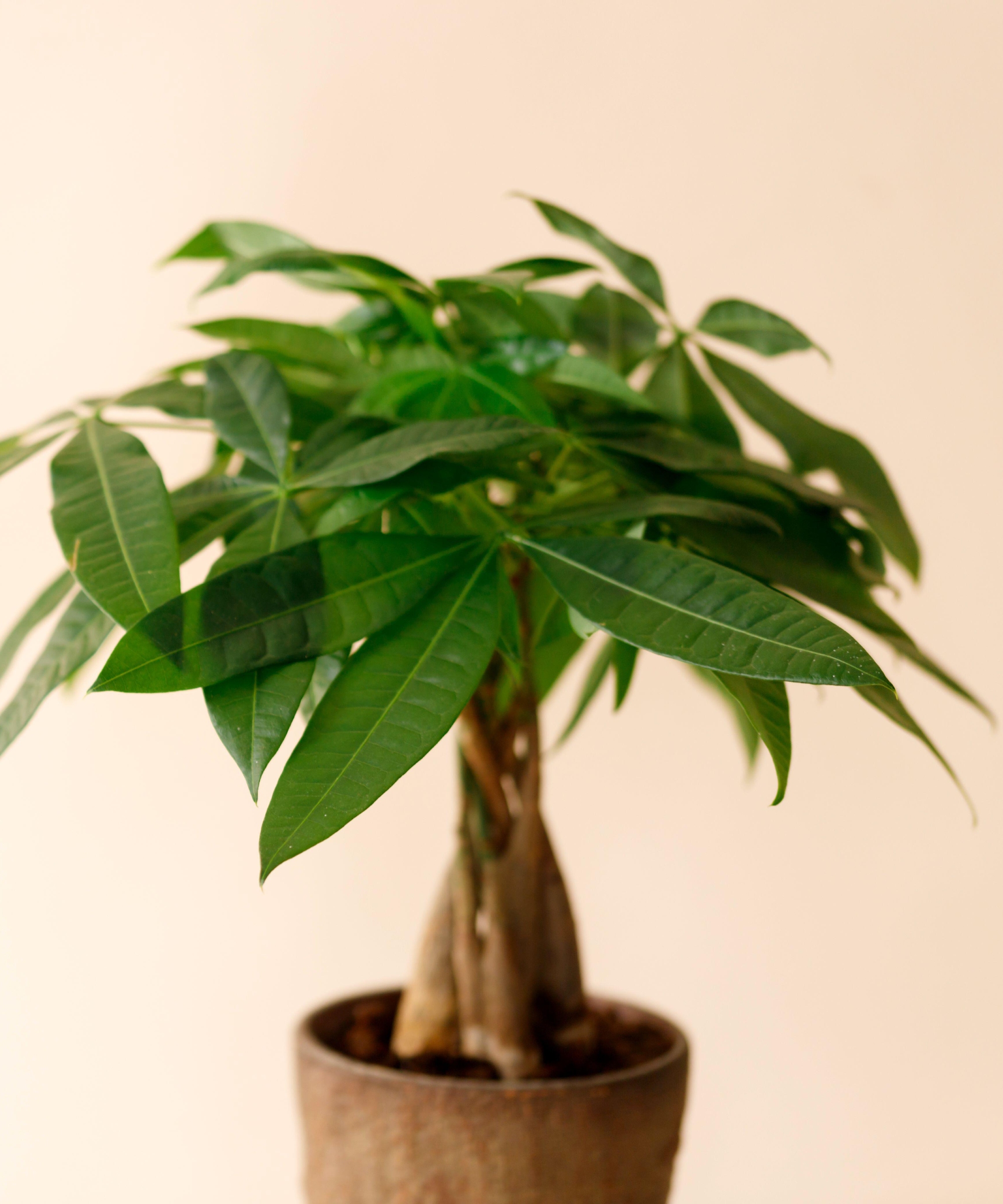Why is my money tree losing leaves? Expert solutions for a healthy tree
Experts diagnose the problem – and share the cure that will nurse your statement houseplant back to health


There is a lot to love about the money tree – the tropical wetland plant that is admired for its tall, exotic style and feng shui benefits. However, if you're asking 'why is my money tree losing leaves?', you're likely experiencing the downside to statement houseplant.
Despite their positive energy and good looks, this tree (also known as the Guiana Chestnut) does involve regular maintenance – and learning the intricacies of money tree care will work wonders for your plant. Though even if you've mastered an effective routine, you may still notice that your money tree is losing leaves – making it hard to diagnose the problem.
However, with the right advice, you can get to the root of the problem and revive your best indoor tree back to its former beauty over time. The process begins now.
Why is my money tree losing leaves?
'While periodic leaf loss is normal, excessive leaf loss could indicate a money tree is undergoing stress. Like any plant, there are multiple reasons this may be occurring,' says Brody Hall, a Certified Horticulturist, and co-founder at The Indoor Nursery.

In the case of the money tree, the most common problems include temperature stress, overexposure to sunlight, and water issues. They are also susceptible to common houseplant pests as well as under fertilization or over-fertilization.
'If your tree is losing leaves, your first point of action is a diagnosis,' Brody says. 'The first sign of temperature stress is a money tree’s leaves drooping. If the issue is rectified, the plant leaves will begin to show signs of chlorosis (yellowing) and eventually drop.' Here are the main problems to watch out for.
1. Temperature stress
As one of the best air-cleaning indoor plants, you would be forgiven for thinking that this mighty tree would thrive in all kinds of environments. However, despite its power, it is surprisingly sensitive to sunlight – meaning sunburn is one of the biggest problems to watch out for.
'Sunburn, due to overexposure to sunlight, begins to show as light brown patches on the leaves that are facing the light source,' Brody says. 'Once burnt, the leaves will continue to brown and, if enough damage has occurred, will drop.'
2. Underwatering
Knowing when to water plants is vital to any indoor tree's health, and the Guiana Chestnut is no expectation.
If your tree is underwater, the signs look similar to temperature stress, meaning the leaves will droop, turn yellow and curl up before browning and dropping. 'Rather than the leaves yellowing homogeneously like it would with under-watering issues, over-watering causes a money tree’s leaves to yellow and brown from the tip or margins of the leaves,' the expert says.
3. Pests
When looking for ways to cure your money tree, it may seem unlikely that knowing how to get rid of gnats could be the solution. However, these prevention tactics could be the secret you need to ensure your plant stays healthy.
Alongside fungus gnats, money trees are often frequented by insects like aphids and mealybugs, alongside fungus-like powdery mildew. 'Each affliction will show different symptoms; however, the result is the same: a tree’s leaves will begin to yellow or brown and drop,' the expert warns.
4. Under or over-fertilization
Incorrect fertilization is another common problem for money trees. If your plant is under-fertilized, it will likely show as chlorosis – originating 'from the midrib or between the lateral or sub-lateral veins that run from the midrib towards a leaf’s margins.'
Meanwhile, over-fertilization will also cause chlorosis, but the symptoms appear similar to those of underwatering. Brody explains that the leaves will begin to distort, curl, and show signs of deformity before falling.

What to do if a money tree is losing leaves?
If your money tree is suffering from any of the problems above, it is important to take action fast to improve your tree's chances of survival.
If temperature stress is your problem, you should move your tree to a new spot (out of direct sunlight) that sits between 65-80°F or 18-27°C (an optimum climate for the tree).
'Under-watering is a simple fix. Although over-watering may require a money tree to be re-potted into more appropriate potting soil or to assess if there is any root rot occurring,' Brody says. '[And] if root rot is an issue, the decaying roots may need to be pruned, and the plant replanted in free-draining soil.'
If under fertilization is the issue, you can learn how to fertilize with Epsom salts or invest in a specialized money tree liquid fertilizer [such as this one on Amazon]. If your plant is over-fertilized, Brody suggests potting soil with a generous dose of water or washing the roots free of residual fertilizer and repotting in fresh soil.

Will money tree leaves grow back?
Yes, with the right care (such as the expert tips above), your leaves will grow back. However, the results are not instant. Sarah Beaumont, the CEO and content director of Indoor Home Garden, explains that it will take a little while for new growth to show – so keep following the expert instructions and be patient – your efforts will pay off eventually.
How often should I water money tree?
You should only water money plants if the top couple of inches of soil are dry, the experts say. And when watering, it is vital to ensure your container has holes that will allow the water to drain from the soil. 'This will let you know that the drainage system is working and that all of the roots have access to water,' Sarah says.
Sign up to the Homes & Gardens newsletter
Design expertise in your inbox – from inspiring decorating ideas and beautiful celebrity homes to practical gardening advice and shopping round-ups.

Megan is the Head of Celebrity Style News at Homes & Gardens, where she leads the celebrity/ news team. She has a history in interior design, travel, and news journalism, having lived and worked in New York, Paris, and, currently, London. Megan has bylines in Livingetc, The Telegraph, and IRK Magazine, and has interviewed the likes of Drew Barrymore, Ayesha Curry, Michelle Keegan, and Tan France, among others. She lives in a London apartment with her antique typewriter and an eclectic espresso cup collection, and dreams of a Kelly Wearstler-designed home.
-
 How to clean a patio – 6 different methods, and when you must use a chemical cleaning agent
How to clean a patio – 6 different methods, and when you must use a chemical cleaning agentFrom manual scrubbing, natural solutions or calling in the pros, industry experts reveal the benefits and considerations of each method
By Andy van Terheyden Published
-
 Kris Jenner's favorite air fryer, the Ninja Crispi, is the perfect small kitchen solution – it deserves a place on the most compact of countertops
Kris Jenner's favorite air fryer, the Ninja Crispi, is the perfect small kitchen solution – it deserves a place on the most compact of countertopsKris approves of this compact yet powerful air fryer, and so do our own kitchen appliance experts, praising it for its multifunctionality
By Hannah Ziegler Published